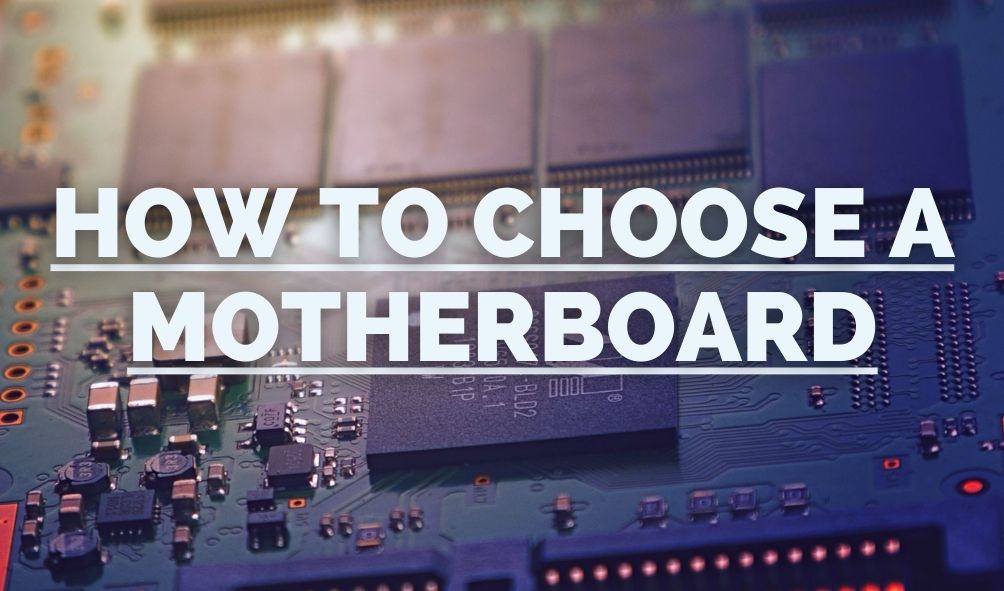Usually, a significant part of the budget allocated for a PC assembly goes to the processor and video card, but do not forget that at the heart of any system is the motherboard. It is on it that all the components are installed, it is its form factor that affects the size of your computer, and the chipset and socket determine which processors you can install.
Motherboards can differ significantly in terms of equipment: if simple models can be purchased for less than $50, then high-end motherboards easily overcome the bar of $450. Let’s deal with the possible difficulties and help you choose the right model for your needs and requirements – and at the same time save your money.
Read a detailed guide on the best motherboard for ryzen 7 3700x.
- Choose the right socket for your processor: Both Intel and AMD make excellent processors, and no matter which chip you choose, you should make sure that the socket (processor socket) on the motherboard is compatible with the model you like. Modern mainstream AMD processors are installed in the AM4 socket, and Intel 8th generation chips are installed in the LGA 1151v2 socket.
- The smaller the board, the fewer slots and functions. Motherboards come in three main form factors or frame sizes, from largest to smallest: ATX, Micro-ATX, and Mini-ITX (Yes, Mini is smaller than Micro). Micro-ATX and Mini-ITX form factors can be installed in more compact cases, but in return, you will have to sacrifice additional PCI Express slots, memory slots and other ports.
- Your budget is limited to $ 100. For less than $ 100 you can get a great motherboard, but if you plan to overclock an Intel processor or need a lot of ports, expect to spend a little more, usually up to $ 150. High-end processors like the AMD Threadripper require expensive motherboards starting at $ 200 and up.
- Pay for built-in Wi-Fi and additional controllers only if you need them. Don’t waste money on a wireless adapter if you’re using a wired connection. Support for USB 3.1 Gen 2 and/or Thunderbolt 3 could pay off in the future.
How much are you planning to spend?
Motherboard prices range from around $40 for extremely simple budget options to over $450 for motherboards for high-end processors (HEDT – High-End Desktop) like Core X or Threadripper. There are four price ranges conditionally:
- Up to $ 100: For this money, you can purchase overclocking boards for AMD processors (even on the latest premium X370 chipset). However, there will no longer be such boards for Intel chips (although you can find overclocking boards on the Z370 chipset for a little more money). Depending on the price, you can get a whole host of features, including a Wi-Fi controller, which typically cost over $ 80.
- $ 100 to $ 150: Motherboards based on the Z370 chipset, which allows overclocking Intel processors, start at the lower end of this price range. There are also more AMD boards with high-end chipsets (X470) and premium features like RGB lighting and Wi-Fi.
- From $ 150 to $ 200: The higher the price, the more premium features: RGB lighting, radiators, power phases and voltage regulators, which play a critical role in overclocking. You also get a wider range of ports, including more USB 3.0 / 3.1 Gen 2 ports.
- From $ 200 and up This is a truly premium class for mainstream platforms, and here you will find the highest quality components, giant radiators of unusual design, as well as shrouds for I / O ports that create a special look. These boards also offer extreme overclocking capabilities that are not required when building conventional systems. Here you will also find boards for HEDT processors with a very large number of cores – Intel Core X and AMD Threadripper. Board prices for Threadripper start at around $ 300.
What processor are you planning to install?
The processor narrows down the choices because the socket on the motherboard will only work with the processors for which it was designed.
For example, if you buy an 8th Gen Intel Core processor, you will need a board with an LGA 1151 socket, moreover, designed specifically for 8th Gen chips. Older 7th Gen boards have the same socket, but they will not work with the newer chips.
In the case of AMD, everything is much simpler, since, at the time of this writing, the AM4 socket is suitable for all mass processors of the latest generation, from Athlon to 8-core Ryzen 7. At the same time, AMD promises not to change the socket until 2020. Intel, on the other hand, has changed connectors (or at least compatibility) with each generation of processors in recent years.
High-end processors (HEDT) are installed in other sockets – Intel LGA 2066 and AMD TR4, which meet the large size and power requirements of these chips.







